Kraków 2007-05-01
140 Section 1956-05-25
WSK Mielec MiG-17 PF, Lim-5, Lim-5 P
Poland
History
Fighter plane.

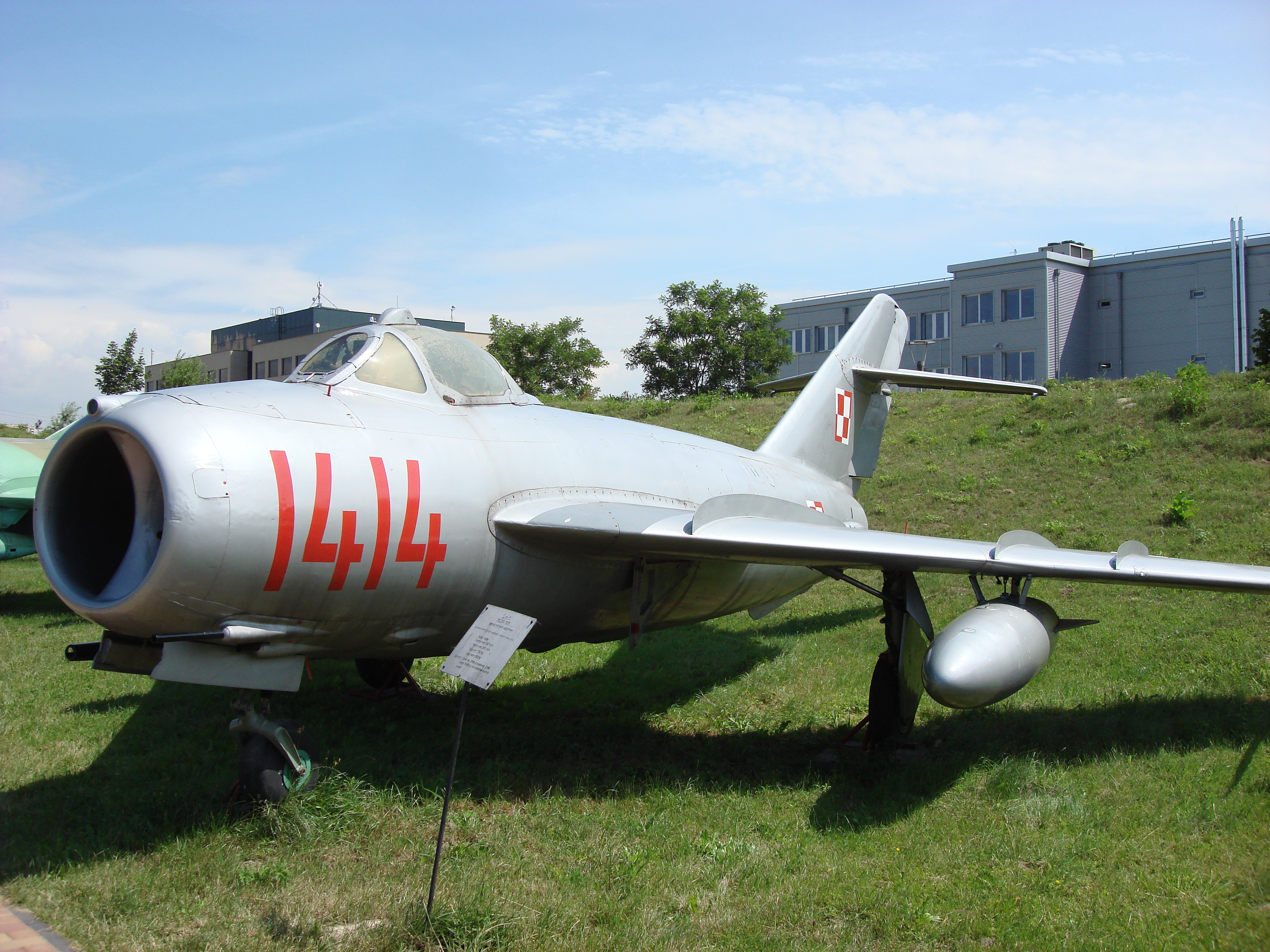
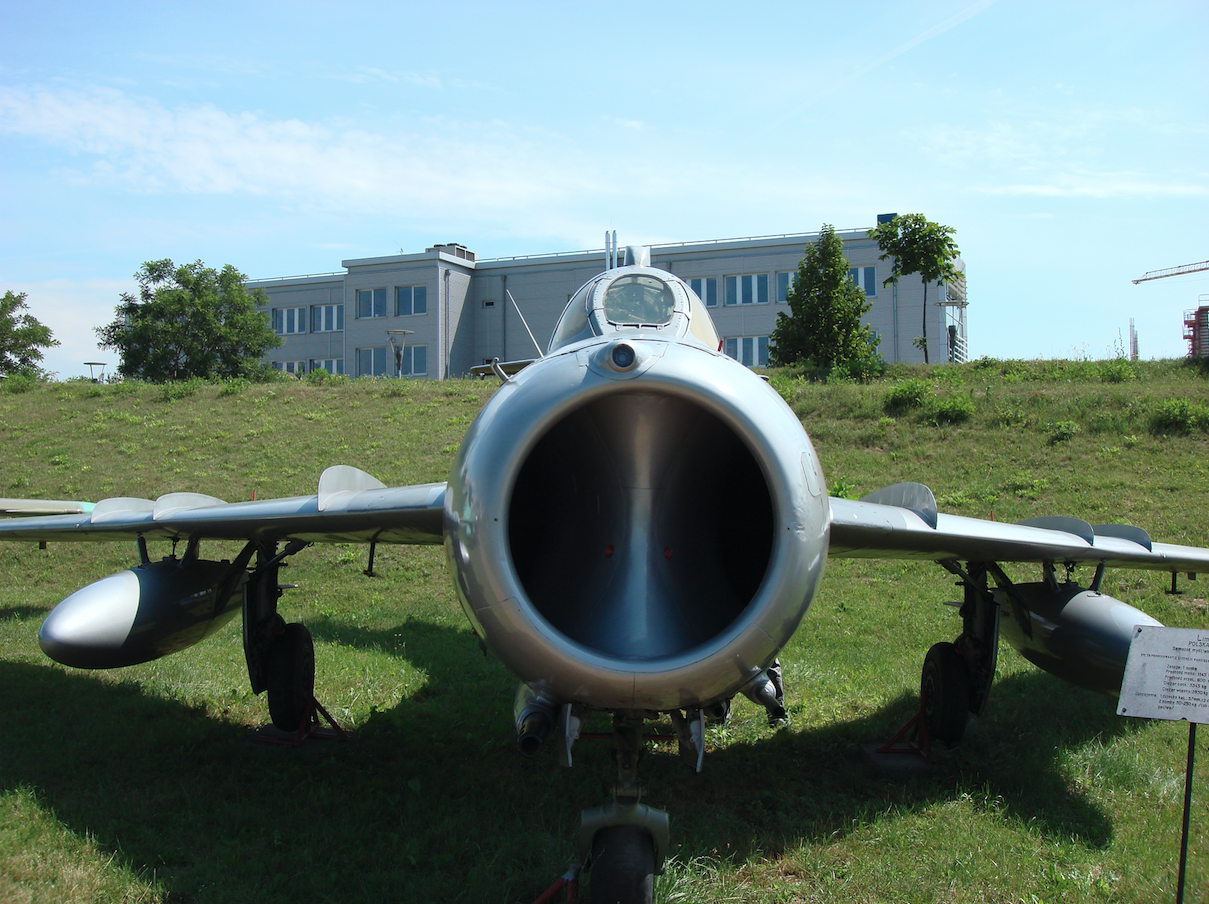
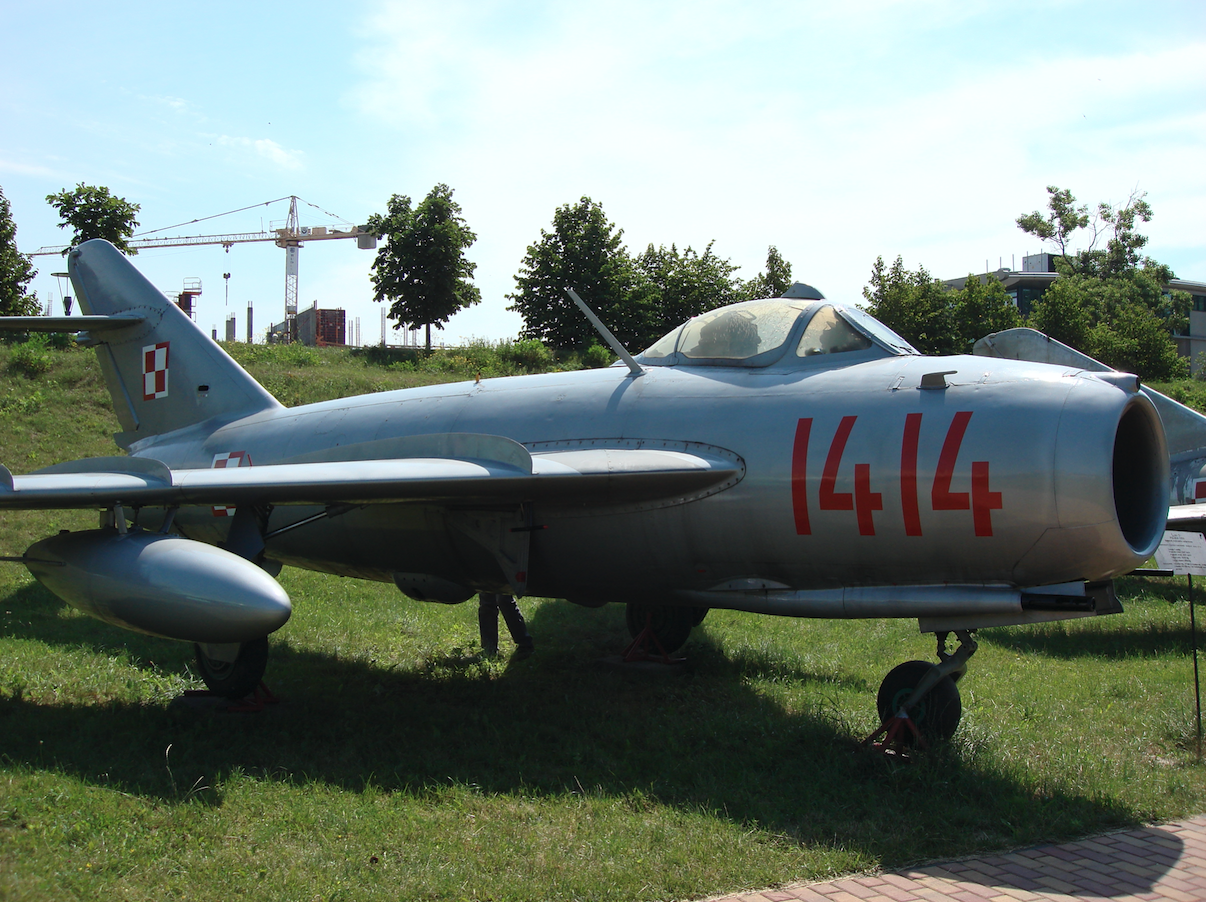
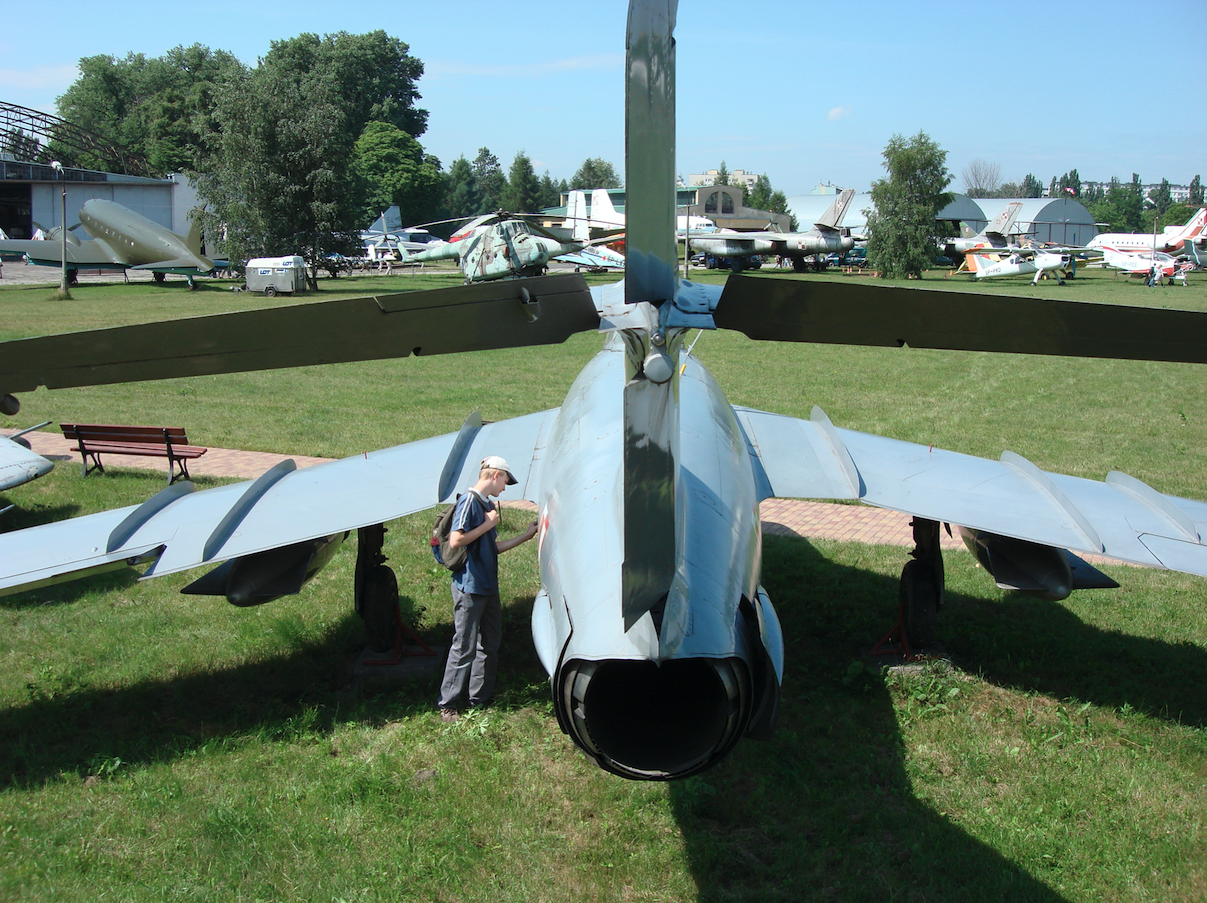
Purchase history for MiG-17. 1955.
The political situation was barely under control, ending the bloody war in Korea, and already in the mid-50s, it again became inflamed politically and militarily in Europe. On 1955-05-05, in connection with the ratification of the Paris Agreements, Germany was incorporated into NATO's structures. The Eastern Bloc established the Warsaw Pact at a convened conference in Warsaw under the direction of CCCP. Its effect was the reorganization of armed structures, especially their tasks and subordination. A further effect was the introduction of new equipment. Helicopters appeared. But not only.
As part of the modernization of fighter aviation, the first batch of 12 MiG-17 PF aircraft was purchased at CCCP. The aircraft were delivered in the second half of 1955. MiG-17 P aircraft had on-board radar sights, which ensured interception of targets in all weather conditions. Based on these aircraft, an interceptor (pursuit) was created at the airport in Bemowo (Babice) under the Warsaw Pact.
In 1956, Polish Fighter Aircraft had: 541 fighters, exclusively turbojets; MiG-15, MiG-15bis, Lim-1, Lim-2 and MiG-17 PF. In 1956, we bought 4 MiG-17 F aircraft at CCCP, one of which served as a benchmark for mass production at PZL WSK-Mielec.
In 1955, a group of selected pilots went to CCCP to train for new MiG-17 PF aircraft. Among them were pilots; Capt. Czajka, lieutenant R Operacz, lieutenant S. Radziejowski, lieutenant S. NY The training took place in Lipiecki and Taganrog. After returning to the country, the Independent Fighter Squadron was created from these pilots at Bemowo (Babice) airport. Cpt. Czajka. Meanwhile, a second group of a dozen or so pilots began training in Lipiecko on an annual course. They were it; S Wdowczyk, H Michałowski, S Kowal, M Polech, Czesław Tanana, Garczyński, Graczyk, Kozik, Skibicki, Lewiński, Padlewski, Czajkowski, Zieleziński. In 1956, a third group of 9 pilots underwent CCCP training. They were there; W Hermaszewski, A Dobrzeniecki, T Matras, S Zaniewski.
Lim-5. 1956.
In 1955, a decision was made to start serial production of MiG-17 fighters. The Russians initially agreed to the production of the MiG-17 F version, i.e. without a radar sight. Time came later for the version with the radar sight.
At the beginning of 1956, preparations for the production of MiG-17 F aircraft under the designation Lim-5 began in WSK Mielec.
The first copy of Lim-5 with the factory number 1C 00-01 left the factory hall in Mielec on 1956-05-25, that is when the production of ordered Lim-2 aircraft was still in progress. The aircraft belonged to a trial batch consisting of three machines with numbers from 1C 00-01 to 1C 00-03. Machines have undergone factory and military tests. On 1956-11-28, the machines were handed over to the army and transported to the airport in Bemowo. It was five days after the last copy of the Lim-2 fighter plane was delivered to the army. The first copy of the Lim-5 aircraft with the numbers 1C 00-01 became the aircraft of the air force commander. After years, he came to Dęblin as a study aid.
The airport in Bemowo (Babice) has become a place of training Polish pilots. Further planes were delivered from the factory in 1957. One plane went to Dęblin. Also one to the Technical Institute for further flight tests.
By the spring of 1957, Lim-5 production was already well controlled. More aircraft have already hit combat units. In total, throughout 1957, the army from the Mielec factory received 73 Lim-5 fighters. Adding to this 4 MiG-17 F machines and 12 MiG-17 PF machines previously imported from CCCP. In total there were 84 pieces. By the end of 1957, 222 fighters rolled off the assembly line in Mielec.
From 8.02.1957 to 19.04.1957, the first copy of the second production series 1C 02-01 passed the tests. The tests were conducted by pilots Z. Stręk, Z. Korab and M. Skowroński. This copy did not yet have an SRD-1 M radio-range meter, due to delays in delivery from CCCP. The aircraft was also heavier than the Soviet model by 130 kg, presumably because the Polish aircraft already included changes that the Soviet model did not have. This machine was not handed over to the army, it only served as a benchmark for serial production. In March 1958, the aircraft was transferred to the Institute of Aviation. At the Bemowo airport in Warsaw, the aircraft underwent all possible tests. The pilots were Major Antoni Parol, Capt. Józef Menet and Major Józef Luty. The tests were not completed until December 1959. Later, the AFA-39 camera was mounted on this specimen under the middle of the fuselage, creating the Lim-5 R aircraft.
The production of Lim-5 aircraft was completed in 1960-06-30, after building 477 units, of which 120 fighters from 6, 7, 8 and 9 series were delivered to the GDR. The total production series was 19. Last produced on 30.06.1960. Lim-5 is designated 1C 19-14. The main production lasted 44 months, and the average production rate was 11 machines per month. It should be emphasized that the factory mastered the production of the aircraft and a good level of performance of all the copies.
Supplying new aircraft to units resulted in machine rotation. The MiG-15, MiG-15 bis, Lim-1 and Lim-2 aircraft were gradually moved to assault aviation. It continued gradually from 1957 to 1960. The last two assault regiments from Mirosławiec and Inowrocław received jet aircraft in 1960. It was the end of the era of reciprocating aircraft in assault aviation.
Lim-5 P. 1959.
MiG-17 PF aircraft imported to Poland belonged to an early production series. They were equipped with the Izumrud RP-1 radar station. However, the pattern from the later production series with the RP-5 radar station was chosen for serial production.
At the beginning of 1959, the plant in Mielec launched the license production of MiG-17 PF aircraft, under the designation Lim-5 P. The first copy, with the serial number 1D-01-01, left the plant in 1959-01-18. After the flight, the plane was directed to Modlin. In 1959-1960, 129 aircraft were built in 6 production series. 40 of them were sent to the GDR. The last copy of 1D 06-41 was made in 1960-12-29. The main production lasted 24 months, and the average production rate was 6 machines per month.
Service MiG-17 PF. 1955.
As mentioned above, 12 MiG-17 PF aircraft arrived in Poland in the second half of 1955, at the airport in Bemowo. On their basis, an Independent Pursuit Squadron was created under the direct command of the Warsaw Pact. The squadron functioned full-time at 1 PLM, which at the time had mainly Lim-2 fighters.
Already in 1956, the transfer of 1 PLM and the Independent Squadron to the new airport in Janów near Mińsk Mazowiecki began.
The use of Lim-5 aircraft.
About 357 Lim-5 aircraft went to the armament of Polish fighter regiments by the end of 1960. This aircraft became the basic fighter defending Polish Sky, but daytime fighter. The lack of radar sight meant that he was not a first-fighter. 12 MiG-17 PF aircraft gathered in the Independent Aviation Squadron, adjacent to 1 PLM, performed this role. At the same time, the MiG-19 P radar fighters and the MiG-19 PM radar and rocket radar fighter jets were introduced into our armament. The necessity to introduce more radar planes (equipped with radar sights) into the armament was inevitable.
The use of Lim-5 P aircraft.
There is no doubt, however, that at the end of the 1950s, developed fighter aviation surpassed the possibilities of our economy, and above all the standard of living of the citizens. One gets the impression that our leaders, realizing this, have restrained Moscow's pressure for constant quantitative and qualitative growth of our army. We think that the production of the Lim-5 P (MiG-17 PF) subsonic radar fighter was just such a solution. After all, we knew that the era of supersonic aircraft had already arrived.
Equipping our aviation with about 89 Lim-5 P was undoubtedly a compromise, allowing to postpone the next costs of purchasing more modern, but expensive aircraft in CCCP. According to available information, Lim-5 P aircraft were assigned to squadrons with Lim-5 fighters. Commanders of squadrons and keys were usually pilots of these machines.
Written by Karol Placha Hetman
Kraków 2007-05-01
140 Section 1956-05-25
WSK Mielec MiG-17, Lim-5, Lim-5 P
Poland
Construction
Fighter plane.
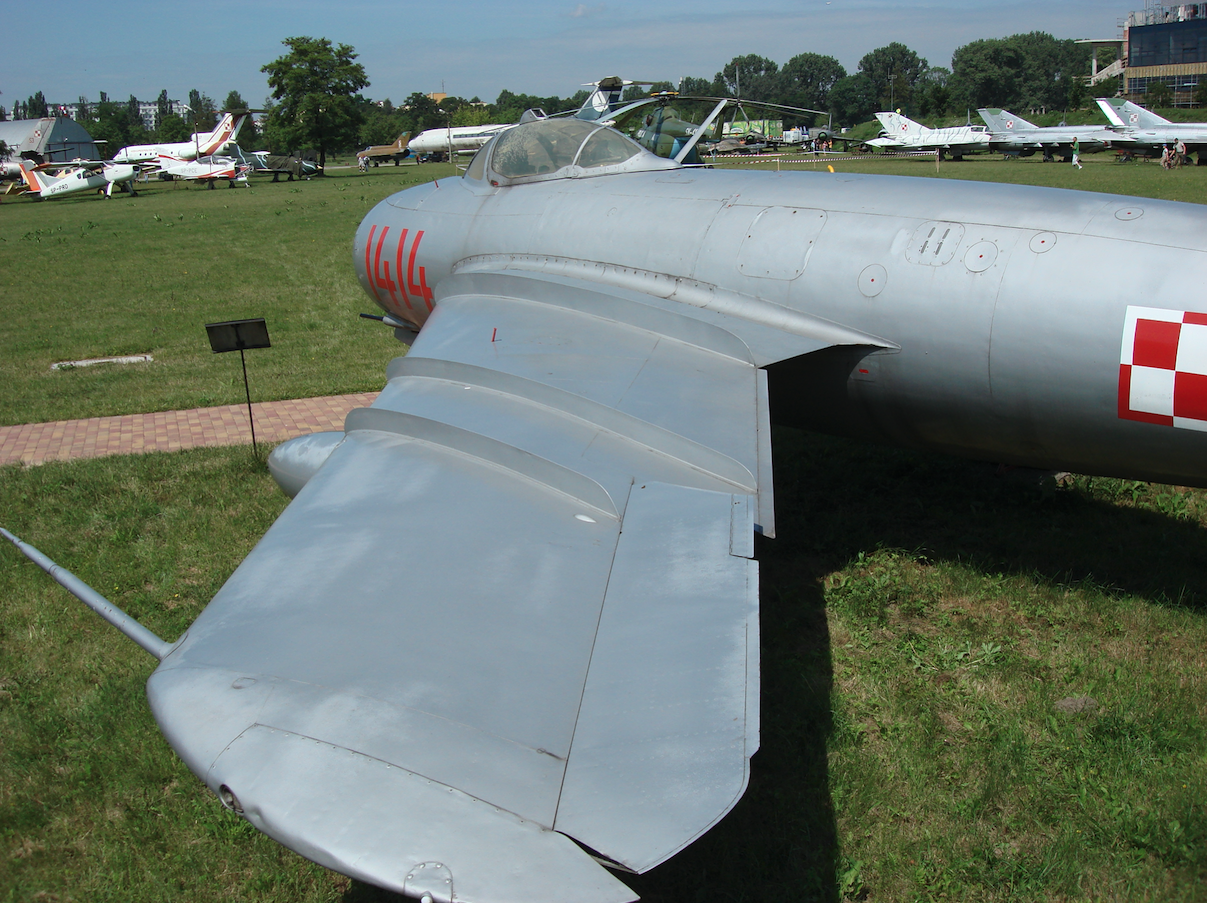

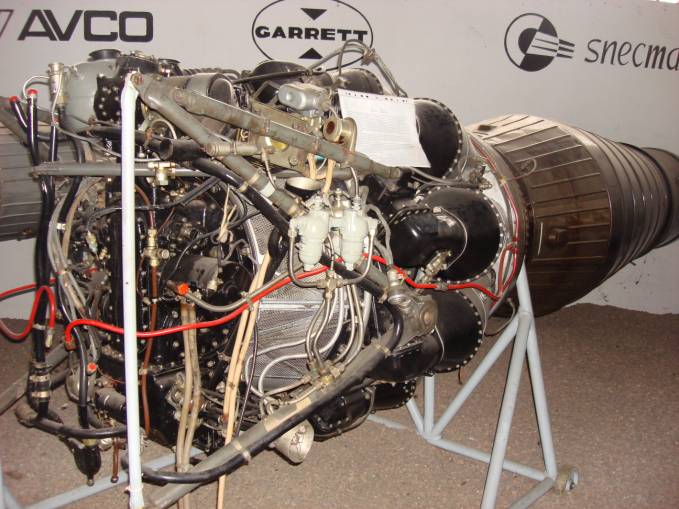
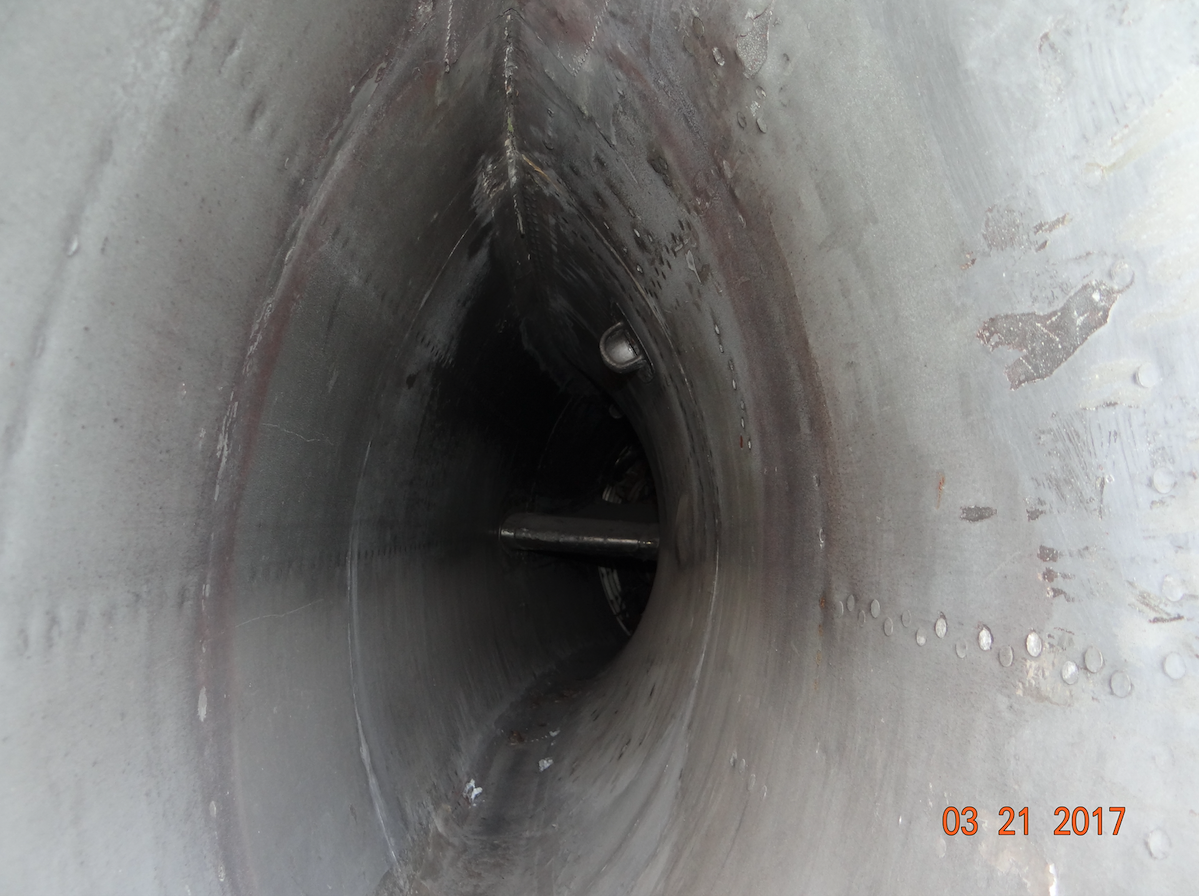


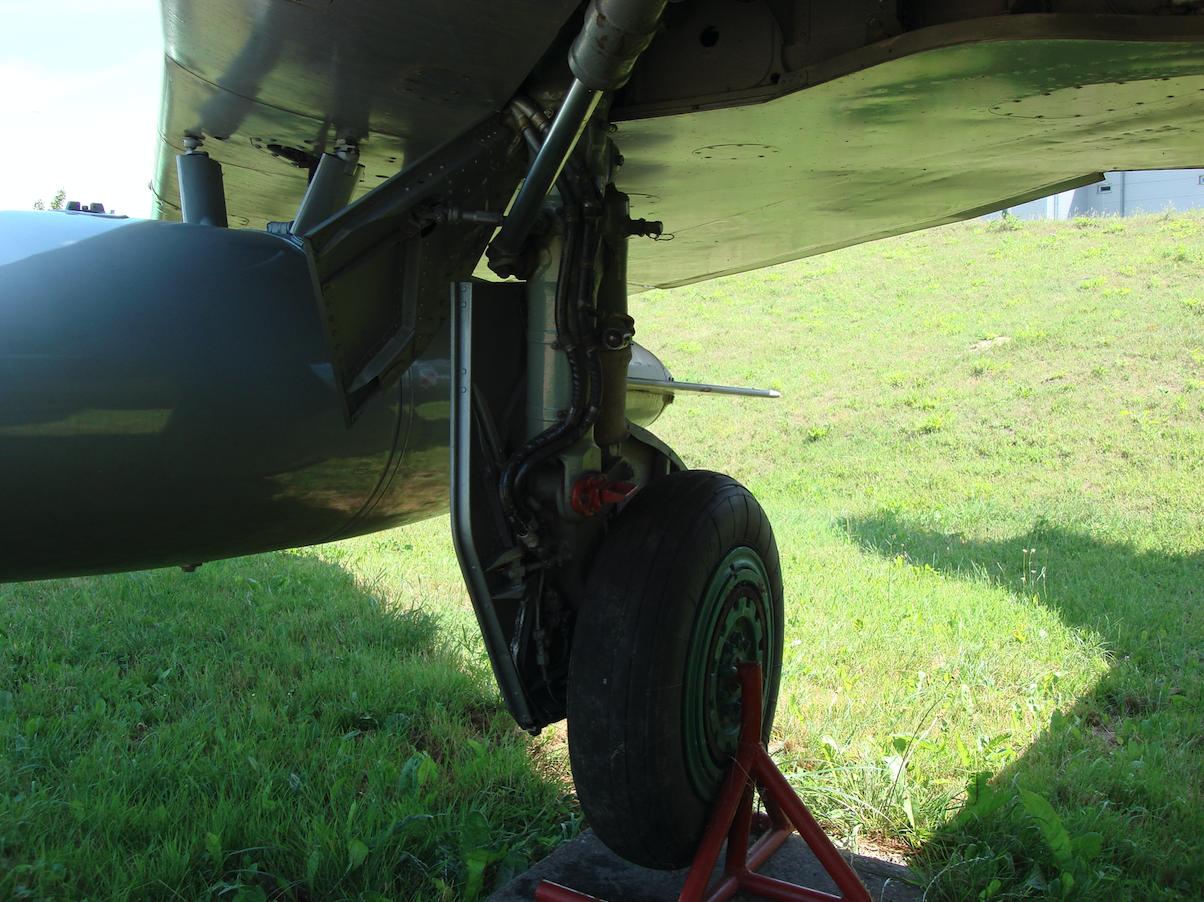
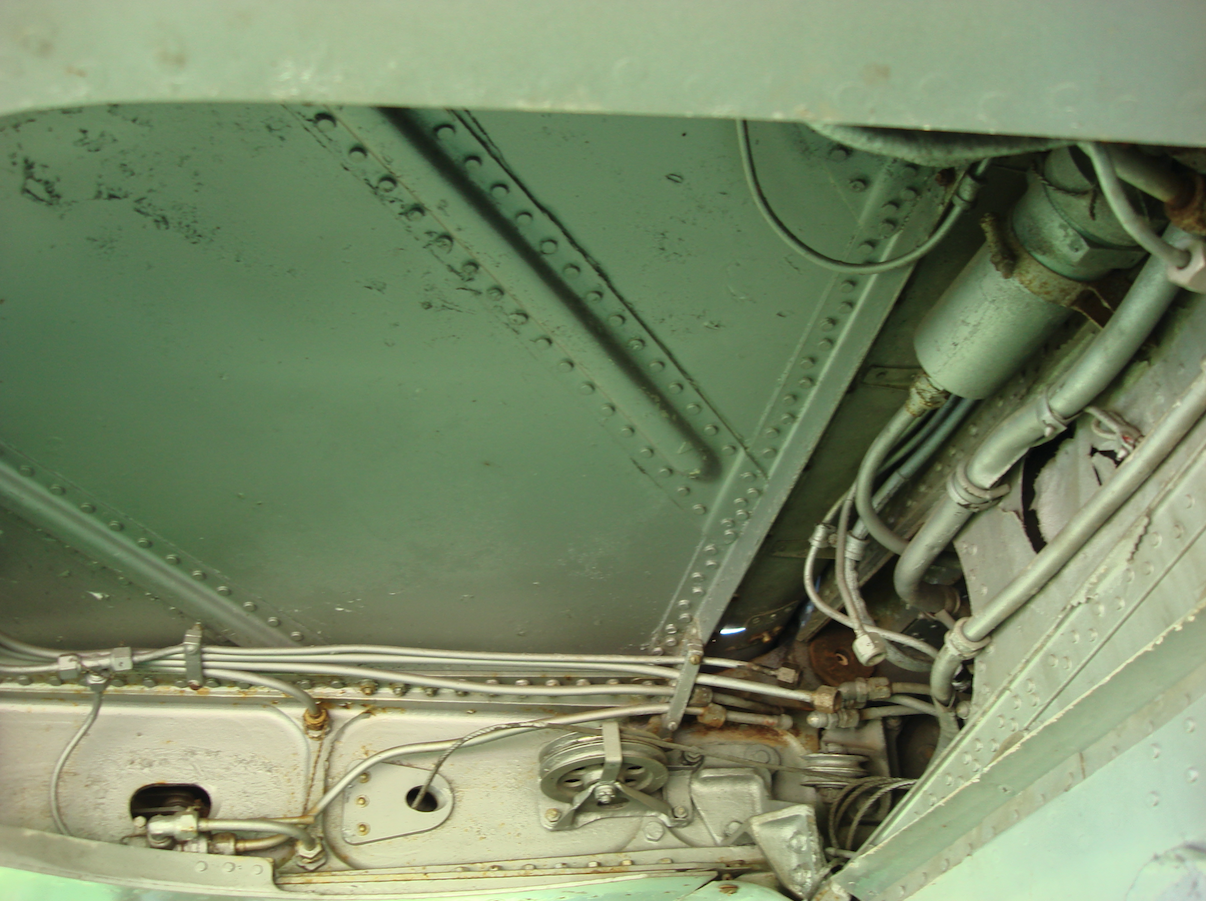
Construction Lim-5.
The aircraft is a consistent development of the MiG-15 bis (Lim-2) design, which is intended primarily for a new power unit equipped with an afterburner, the used predecessors did not have. The whole system is left, but thanks to the longer power unit, the extension of the submission of the fuselage, which made the aircraft slimmer. A clearly more powerful propulsion tractor was not created, however, that the aircraft became a supersonic structure. It is true that the machine is capable of reaching speeds equal to or slightly higher than Ma-1, and in horizontal flight, but it only lasts a short time and is paid for by considerable fuel consumption. At least the most important thing on serial aircraft is the automatic mount, which at M-0.97 puts out the brakes and retracts them automatically when the speed drops to Ma-0.92. So it's a typical fighter jet not to use sound speed.
Single-engine, single-seat front fighter, built in a classic layout. Medium wing, with slanting wing. Half-shell construction, riveted.
An oblique wing, called a sickle wing, with a skew angle of 45 degrees at the fuselage and 42 degrees further. Laminar profile S-12s at the base and SR-11 at the end were used. The area of the wings is 22.6 m2, wedge angle 1 degree, rise -3 degrees, relative thickness 8%, elongation 4.08, convergence 1.23. Single girder design with rear auxiliary girder. 5.1 kg weight at the end of each wing. Flaps with a total area of 2.86 m2 swing out 20 degrees to take off and 60 degrees to land. Shuttlecocks with a total area of 1.6 m2 are tilted up and down by 18 degrees. The left aileron is fitted with a trimmer moved by an electric motor. On the upper surface of the panels three pairs of aerodynamic steering wheels. The sash is mounted to the hull with four fittings.
The fuselage has a circular section technologically divided into two parts. The front part consists of 13 frames, the rear part of 18. The frame and the rear wing girder are mounted to frame 13. The maximum hull diameter is 1.45 m, the elongation is 6.17 m. The thickness of the coating varies from 1.5 to 1 mm. The air duct walls are 0.8 mm thick. Aerodynamic brakes with a total area of 0.98 m2, are pivoted by an angle of 55 degrees. The brakes are operated by a remote control, and additionally an automatic device that does not allow to exceed critical speeds. At Ma-0.97, the brakes open and close at Ma-0.92. Pilot's cabin partly armored from below. The glazing is a fixed front windbreak with a central armored window and a fairing moved backwards by hand. A periscope at the top of the glazing to observe the rear zone. In the cabin, an overload protection system with PPK-1 garment and a chair thrown out with a face cover. Catapulting is allowed on flights over 250 m and up to a speed of 850 km / h.
Vertical fixture with an angle of 56 degrees, area of 4.26 m2, including 0.947 m2 of rudder. Swivel angle of 25 degrees. Horizontal fixture with an angle of 45 degrees, an area of 3.10 m2, including 0.884 m2 of rudders. Trimmer on the left helm. Headsets tilted 32 degrees up and 16 degrees down.
Front chassis with 480 x 200 wheel dimensions, main with 660 x 160 wheels. Chassis base 3.368 m, wheelbase 3.849 m.
Engine Lim-5.
The license Lim-5, Lim-5 P built in Poland are powered by engines also produced under license by the Polish industry in WSK Rzeszów. It is a Lis-5 engine (license engine) with 1 x 26.46 kN (1 x 2 700 kG) thrust, and with post-combustion 1 x 33.12 kN (1 x 3 380 kG).
The afterburner is connected to the engine and constitutes an extended and properly formed exhaust pipe. A set of injectors was placed there, through which additional fuel is supplied, and its combustion causes an increase in thrust. The afterburner is ended with an adjustable nozzle. The nozzle is completely open during the afterburner operation. When the afterburner is off, the moving segments close together reducing the cross-section of the outlet opening. The engine fuel is supplied by the PCR-1-5 pump.
The fuel was placed only in the fuselage of the aircraft, in the same way as in the Lim-1 / -2 fighter. the main soft fuel tank is located between the cab and the engine and has a capacity of 1,200 (1,250) liters. The second metal-type tank consists of two halves covering the engine at the rear of the hull. It has a capacity of 2 x 165 liters.
The internal fuel supply can be increased by using tanks suspended under the wings with a capacity of 2 x 400 liters. These tanks are made of duralumin sheet or plastic. There is a possibility of their drop during flight.
Fittings Lim-5.
The aircraft was equipped with extensive automation of various systems powered by various installations; fuel, hydraulic, pneumatic, oxygen, air conditioning, electric and anti-icing.
Equipment Lim-5.
FM R-800 or R-801 W. FM radio transceiver.
Foreign-identification device SRO-1, SRO-2 or Chrome (in the last Lim series). This device automatically responds to a special code sent by radio from another aircraft or ground station.
A device warning about the radiation of the enemy Syrena-2 radar. The device signals radiation from the rear half-zone of the aircraft through a radar rangefinder or SR (radar station) of the enemy aircraft.
OSP-48 set for landing according to instruments (RW-2 radio altimeter, ARK-5 radio compass, receiver of overflight signals over MRP-48 P beacon). The RW-2 radio altimeter performs precise measurements in the range from 0 m to 600 m. Its receiving antenna is placed on the gun carriage and the transmitting antenna in the back of the hull. The ARK-5 frame type radio antenna and the receiver antenna of the flight over the MRP-48 beacon are placed under the hull in an organic glass-covered capsule.
Aiming is enabled by the optical automatic gyroscope sight ASP-4 NM (or older ASP-3 NM), cooperating with the SRD-1M rangefinder which measures the actual distance to the target being attacked.
In pilot and navigation equipment; KUS-1200 speedometer, AGI-1 artificial horizon, DGMK-1 gyromagnetic compass, variometer.
Armament Lim-5.
The armament of the aircraft was practically taken over from the MiG-15 fighter. It usually consists of one N-37 D (or similar) cannon with 40 cartridges and two NR-23 (or similar) cannons with 80 cartridges for each parcel. There are also planes with fewer plots; e.g. 1 37 mm. and 1 cal. 23 mm. The plot assembly system was based on a tow truck dropped down.
The supplement is the S-13 photo-carabine.
The permanent equipment of the aircraft is also the EKSR-46 electric helmets built into the vertical stabilizer, close to its base. It has four signal rockets in different colors.
All versions have the ability to carry two bombs weighing from 2 x 50 kg to 2 x 250 kg. They are mounted with the use of D-4-50 ejector locks in place of additional fuel tanks.
Some machines are equipped as standard with the AFA-39 camera. the apparatus was placed in the lower half of the hull. It takes up to 200 photos from a height of 500 m to 5,000 m.
Data T-T WSK PZL Lim-5. 1956.
Span 9,628 m
Length 11.260 m
Height 3,800 m
Bearing area 22.60 m2
Curb weight 3 920 kg
Total weight 5 345 - 5 550 kg
Maximum weight 6,075 kg
Load weight 1 425 kg
Maximum speed of 1 097 km / h at 3 000 m
Top speed 1,145 km / h at 3,000 m with afterburner on
Climbing speed 65 m / s
Landing speed 180-200 km / h
Maximum range 1980 km
Flight time 2 hours 53 min
Ceiling 16 600 m
Run up 805 m
Run stop 885 m
Lis-5 engine with 1 x 26.46 kN thrust without afterburning, 1 x 33.12 kN with afterburning
Crew 1 pilot
Number of copies 477.
Written by Karol Placha Hetman
Kraków 2007-05-01
Section 1956-05-25
WSK Mielec (LZR) MiG-17, Lim-5, Lim-6
Poland
Tally
The list is in another section.
Written by Karol Placha Hetman
